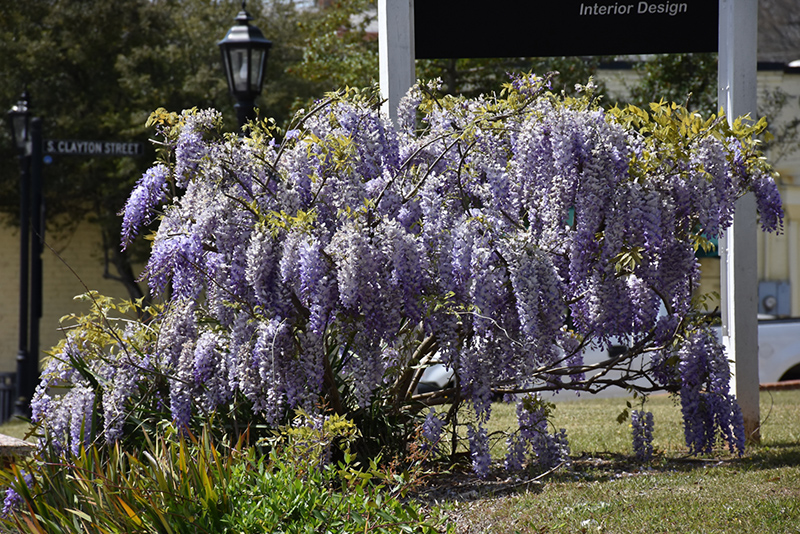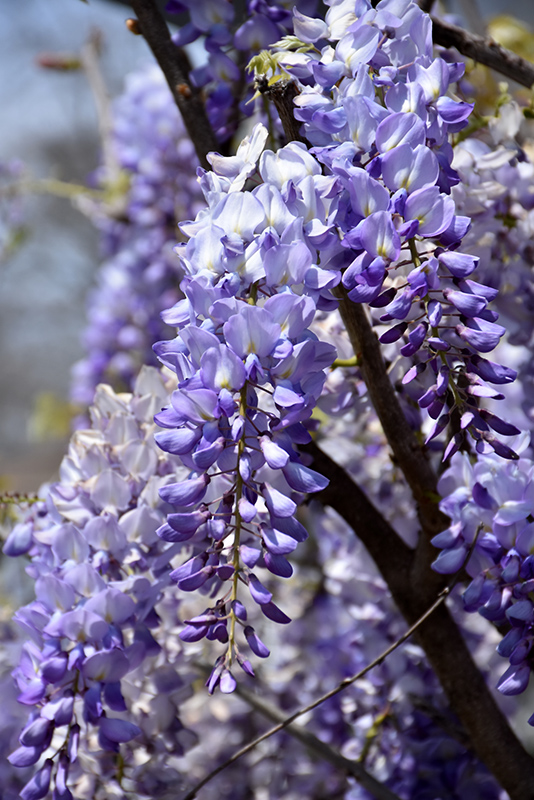Height: 30 feet
Spread: 24 inches
Sunlight:
![]()
Hardiness Zone: 5a
Description:
Long considered the penultimate flowering vine, with exquisite chains of violet-purple flowers cascading from the stems in spring; a very vigorous vine to say the least, can grow quite woody, needs ample support, best if grown on a structure
Ornamental Features
Japanese Wisteria is draped in stunning chains of fragrant violet pea-like flowers hanging below the branches from early to mid spring. It has green deciduous foliage which emerges coppery-bronze in spring. The narrow pinnately compound leaves turn yellow in fall.
Landscape Attributes
Japanese Wisteria is a multi-stemmed deciduous woody vine with a twining and trailing habit of growth. Its average texture blends into the landscape, but can be balanced by one or two finer or coarser trees or shrubs for an effective composition.
This is a high maintenance woody vine that will require regular care and upkeep, and should only be pruned after flowering to avoid removing any of the current season's flowers. It is a good choice for attracting hummingbirds to your yard, but is not particularly attractive to deer who tend to leave it alone in favor of tastier treats. Gardeners should be aware of the following characteristic(s) that may warrant special consideration;
- Spreading
Japanese Wisteria is recommended for the following landscape applications;
- Hedges/Screening
- General Garden Use
Planting & Growing
Japanese Wisteria will grow to be about 30 feet tall at maturity, with a spread of 24 inches. As a climbing vine, it tends to be leggy near the base and should be underplanted with low-growing facer plants. It should be planted near a fence, trellis or other landscape structure where it can be trained to grow upwards on it, or allowed to trail off a retaining wall or slope. It grows at a fast rate, and under ideal conditions can be expected to live for approximately 30 years.
This woody vine should only be grown in full sunlight. It does best in average to evenly moist conditions, but will not tolerate standing water. It is not particular as to soil type or pH. It is highly tolerant of urban pollution and will even thrive in inner city environments. Consider applying a thick mulch around the root zone in winter to protect it in exposed locations or colder microclimates. This species is not originally from North America, and parts of it are known to be toxic to humans and animals, so care should be exercised in planting it around children and pets.








